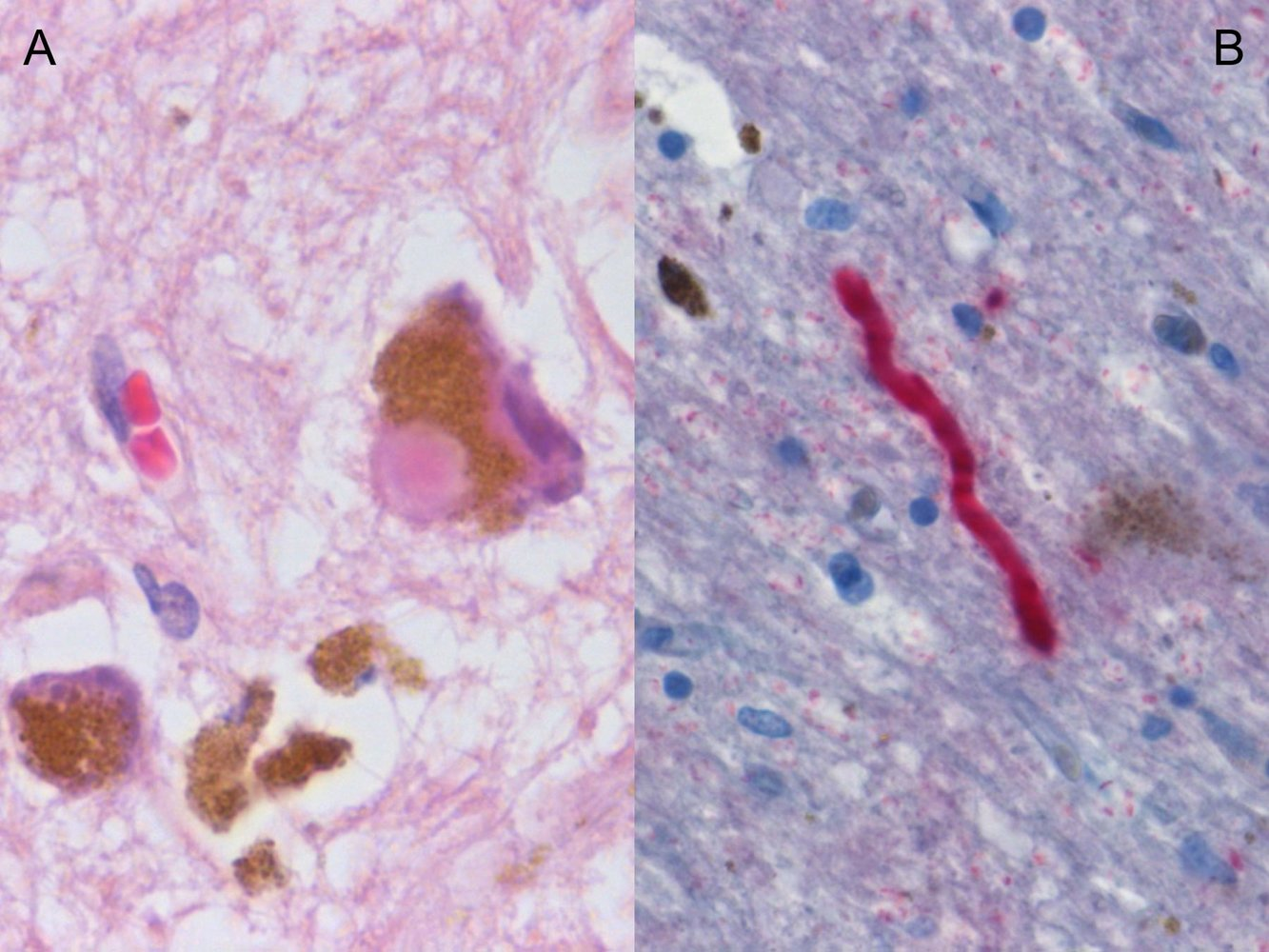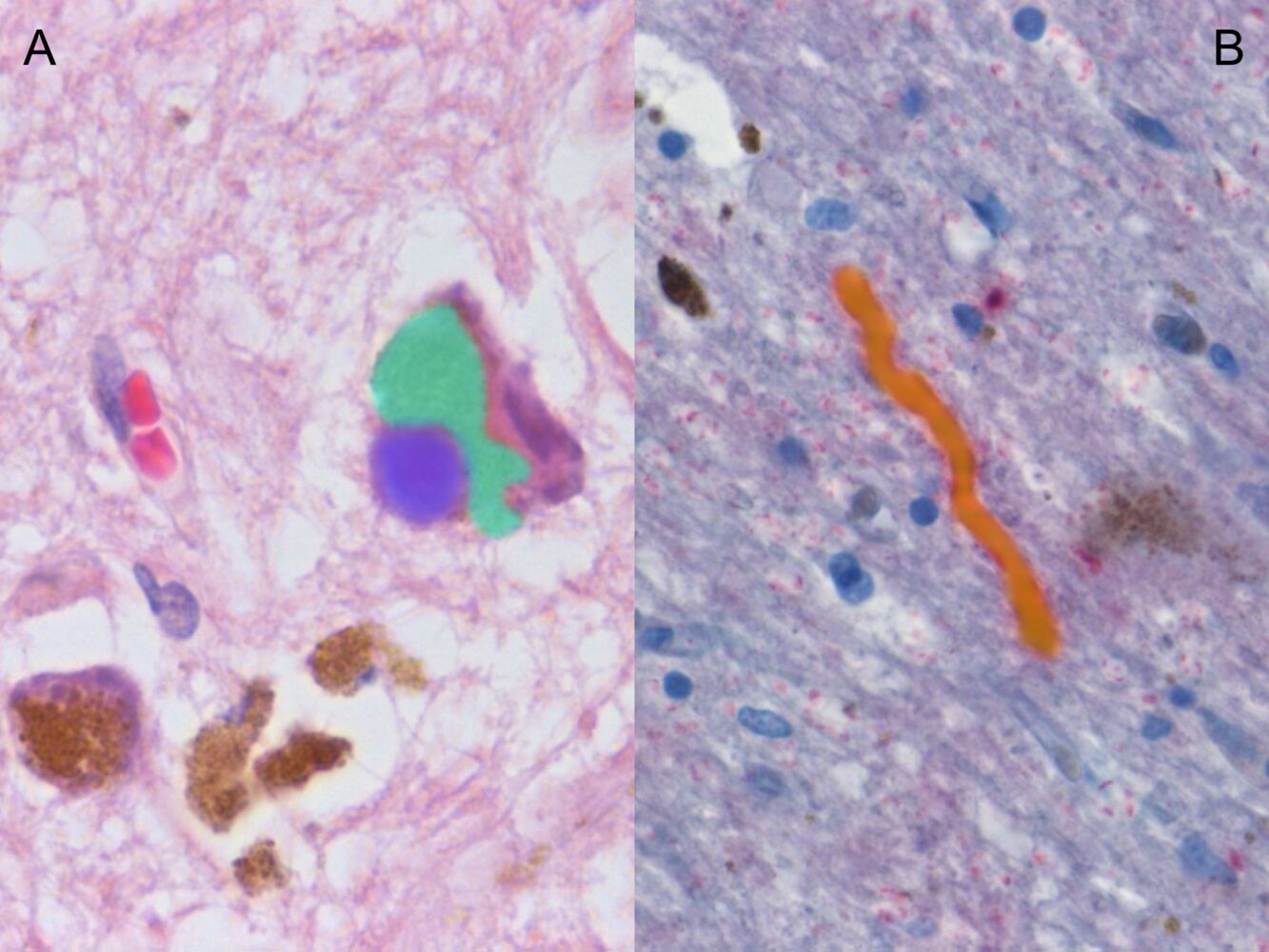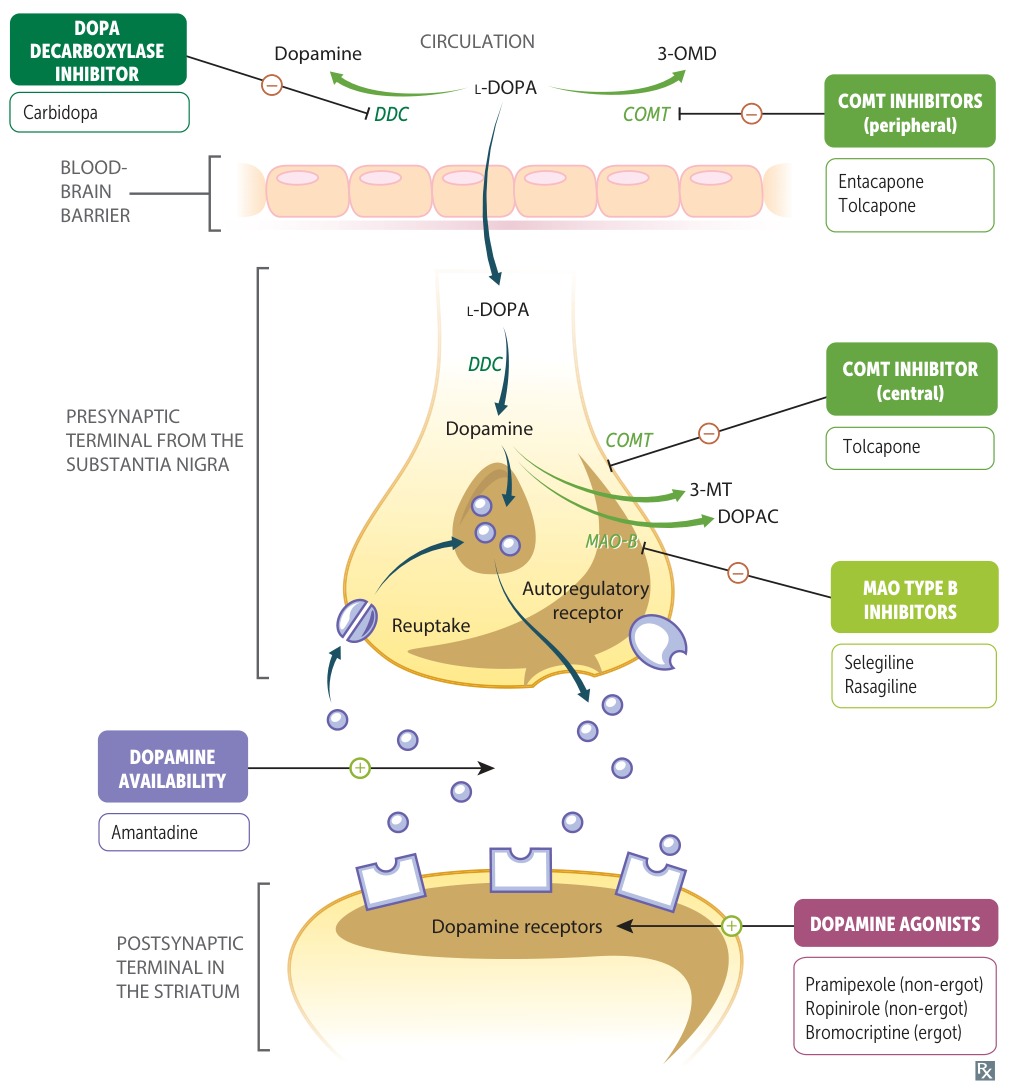Epidemiology
Etiology
Parkinson disease
- Idiopathic
- Contributing genetic factors include:
- α-Synuclein (SNCA)
- α-Synuclein constitutes the major component of Lewy bodies. In addition to mutations, duplication/triplication of the wild-type gene can also cause PD (due to increased production of the normal protein).
- α-Synuclein (SNCA)
Pathophysiology
Mnemonic
PArkinson’s Disease = doPAmine Dowm Alzheimer Disease = Acetylcholine Down
- Progressive dopaminergic neuron degeneration in the substantia nigra (part of the basal ganglia) and the locus coeruleus → dopamine deficiency at the respective receptors of the striatum with interrupted transmission to the thalamus and motor cortex → motor symptoms of PD
- Serotonin and noradrenaline depletion (in the raphe nuclei): likely cause of depressive symptoms
- Acetylcholine surplus (in the nucleus basalis of Meynert): likely cause of dyskinesia
Clinical features
Motor signs
- Parkinsonism
- Bradykinesia: slowed movements in combination with decreased amplitude/speed when moving
- Resting tremor (4–6 Hz)
- Oftentimes the presenting symptom
- Pill-rolling tremor that subsides with voluntary movements but increases with stress
- Rigidity: increased and persistent resistance to passive joint movement that is independent of speed
- Cogwheel rigidity
- Postural instability
- Imbalance and tendency to fall
- Parkinsonian gait: shuffling gait with quickened and shortened steps
Diagnostics
Pathology
- Lewy bodies
- Aggregates of misfolded α-synuclein and other proteins, such as ubiquitin and neurofilament protein within the neural cell bodies
- Appear histologically as intracellular hyaline eosinophilic globules
- May be found in brainstem, substantia nigra, and cortex
- Also seen in Lewy body dementia


- Image A: An eosinophilic cytoplasmic inclusion (Lewy body; blue overlay) is visible inside a neuron. There is a large accumulation of neuromelanin (brown granules; green overlay).
- Image B: A neurite staining positive for α-synuclein is visible in the center of the image (Lewy neurite; yellow overlay).
Treatment

Nonergot dopamine receptor agonists
- Pramipexole, Ropinirole, Apomorphine
- Consider as initial treatment in younger patients, especially those with risk factors for levodopa-induced dyskinesia.
- Some patients develop impulse control disorders with compulsive gambling or hypersexuality.
Tip
Ergot dopamine agonists (cabergoline and bromocriptine) are not recommended in Parkinson disease or restless leg syndrome, but are first-line treatment in Prolactinoma and Hyperprolactinemia.
Anticholinergic drugs (muscarinic antagonists)
- Benztropine, Trihexyphenidyl, Biperiden
- Beneficial regarding tremor and rigidity but does not improve bradykinesia
Deep brain stimulation (DBS)
- In PD, the lack of dopamine leads to overactivity in the indirect pathway. Key players here are the STN and the GPi.
- Indications
- Severe motor symptoms or refractory tremor
- Decrease in dosage of medication because of adverse effects
- Procedure
- Stereotactic implantation of stimulating electrode(s) targeting the subthalamic nucleus or internal globus pallidus
- Controlled remotely